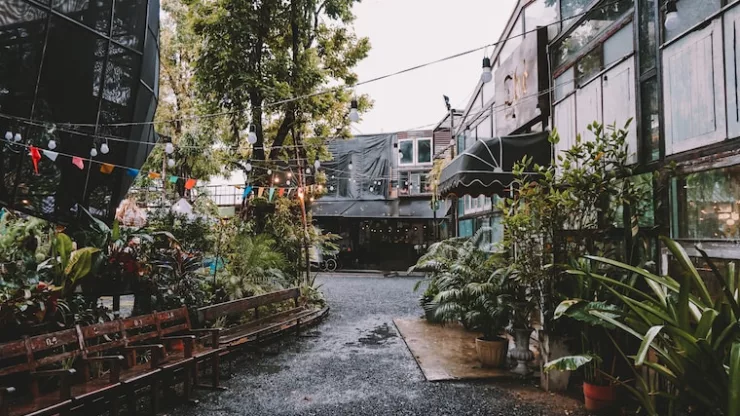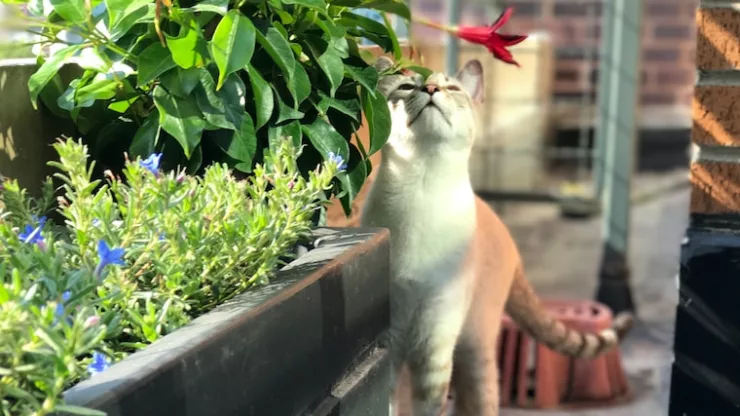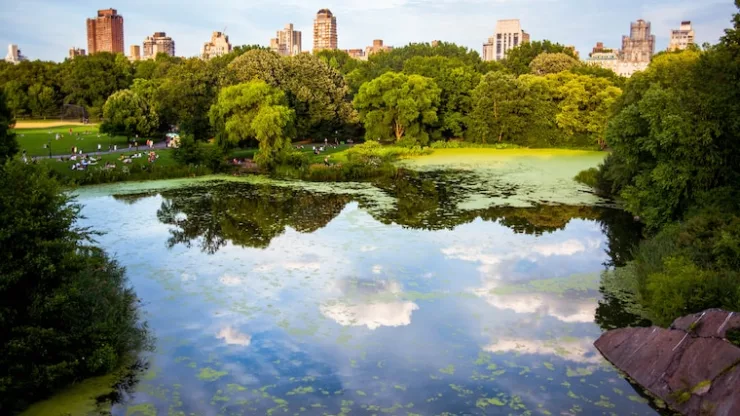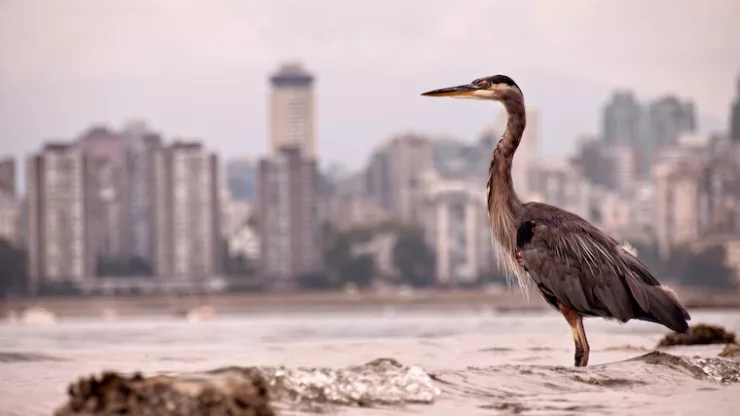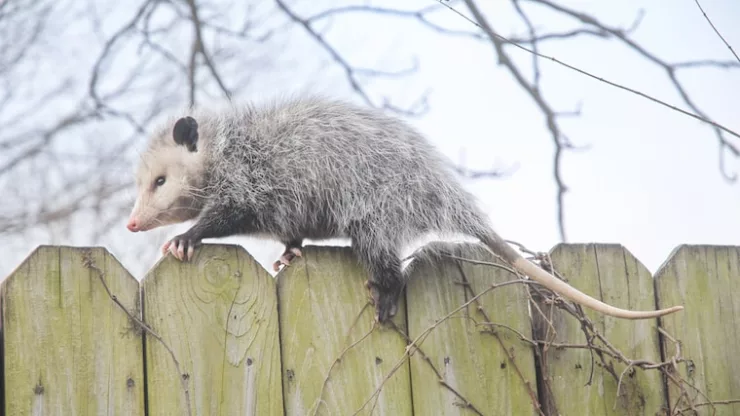Jump to Section
Introduction
Urban wildlife gardening is a form of gardening that specifically focuses on creating habitats for wildlife in urban areas.
With the increasing expansion of cities, it’s becoming increasingly important to create spaces where wildlife can thrive and flourish.
Urban wildlife gardening is not only about creating beautiful gardens, but also about creating a safe haven for city-dwelling species.
The purpose of urban wildlife gardening is to provide a space for wildlife to live, feed, and breed.
This type of gardening can be done on a small scale, such as in a balcony or window box, or on a larger scale, such as in a community garden or park.
Regardless of the size, the goal is to create a space that is beneficial for both wildlife and humans.
Urban wildlife gardening is important because it helps to support biodiversity and maintain a healthy ecosystem.
It also provides opportunities for people to connect with nature and learn about the different species that live in their city.
By creating a haven for urban wildlife, we can also improve the overall health and well-being of our cities.
Understanding Urban Wildlife
There are many different types of urban wildlife, including birds, insects, mammals, and reptiles. Some common urban wildlife species include squirrels, pigeons, sparrows, bats, butterflies, and bees.
These species are adapted to living in urban environments, but they still face many challenges, such as limited food and water sources, limited nesting sites, and exposure to pollutants.
Urban wildlife also faces the threat of habitat loss as cities continue to grow and expand.
This can lead to a decline in the population of certain species and a loss of biodiversity.
By creating and maintaining urban wildlife gardens, we can help to mitigate these challenges and provide a safe and supportive habitat for city-dwelling species.
The benefits of supporting urban wildlife are many. For one, urban wildlife gardens can help to improve air and water quality by filtering pollutants and reducing runoff.
They also provide important food and nesting sites for a variety of species, helping to maintain a healthy and diverse ecosystem.
Additionally, these gardens can provide a peaceful and tranquil escape from the hustle and bustle of city life, and they can also be a source of education and inspiration for people of all ages.
Planning Your Urban Wildlife Garden
Before you start creating your urban wildlife garden, it’s important to plan it carefully. The first step is to choose the right location.
You’ll want to consider factors such as sunlight, water availability, and proximity to other gardens or parks.
Next, you’ll need to decide on the size and shape of your garden.
This will depend on the amount of space you have available and the types of plants and animals you want to attract.
For example, if you want to attract birds, you’ll want to create a garden with plenty of perches and bird feeders.
When it comes to choosing plants and animals, consider the types of species that are native to your area.
These species are better adapted to the local climate and are more likely to thrive in your garden.
You should also consider the types of food and shelter that different species need, and choose plants and structures that can provide these essential resources.
In addition to food and shelter, water and shade are also important considerations.
You can provide water by installing a bird bath or a small pond, and you can provide shade by planting trees and shrubs or installing shade sails or pergolas.
Creating a Habitat for Urban Wildlife
Once you have planned and prepared your garden, it’s time to start creating a habitat for urban wildlife.
Providing food and water is one of the most important steps in attracting wildlife to your garden.
You can do this by planting native plants that produce seeds, fruits, and nectar, and by installing bird feeders and water features.
Another important step is to create nesting and breeding sites.
This can be done by installing bird boxes, bat boxes, and insect hotels, or by planting shrubs and trees that provide natural nesting sites.
By providing these essential resources, you can help to support the growth and survival of urban wildlife populations.
Enhancing biodiversity is also important in urban wildlife gardening.
This can be done by planting a variety of native species, and by creating a mix of habitats, such as grasslands, forests, and wetlands.
This will help to provide a diverse range of resources for different species, and it will also help to promote a healthy and resilient ecosystem.
Finally, it’s important to minimize the use of pesticides and chemicals in your urban wildlife garden.
These substances can be harmful to wildlife and can also have a negative impact on the health of the ecosystem.
Instead, consider using natural pest control methods, such as companion planting and promoting beneficial insects.
Maintaining Your Urban Wildlife Garden
Maintaining your urban wildlife garden is important to ensure that it remains a thriving and supportive habitat for wildlife.
One of the key steps in maintenance is monitoring and observing wildlife in your garden.
This will help you to understand their needs and behavior, and it will also provide valuable information that can be used to improve the garden over time.
Another important aspect of maintenance is managing invasive species.
Invasive species can outcompete native species for resources, and they can also have a negative impact on the health of the ecosystem.
To minimize the impact of invasive species, it’s important to regularly remove them from your garden and to replace them with native species.
Regular maintenance and cleaning are also important for the health of your urban wildlife garden.
This includes tasks such as removing dead plants, pruning shrubs and trees, and cleaning bird feeders and water features.
By keeping your garden clean and well-maintained, you can ensure that it remains a safe and supportive habitat for wildlife.
Finally, it’s important to protect wildlife from predators.
This can be done by installing barriers around bird feeders and nests, and by installing motion-sensor lights and alarms to deter predators.
By taking these steps, you can help to ensure that your urban wildlife garden remains a safe and secure habitat for wildlife.
Challenges and Solutions in Urban Wildlife Gardening
Urban wildlife gardening can present a number of challenges, such as limited space and resources, balancing wildlife and human interactions, dealing with pests and diseases, and overcoming climate and weather challenges.
However, with careful planning and management, these challenges can be overcome.
For example, limited space and resources can be addressed by choosing the right location and by choosing plants and animals that are well-suited to the local climate.
Balancing wildlife and human interactions can be achieved by creating separate areas for wildlife and people, and by promoting respect and understanding between the two.
Dealing with pests and diseases can be challenging, but it can be done by using natural pest control methods and by promoting healthy soil and plant growth.
Overcoming climate and weather challenges can be achieved by choosing plants and animals that are well-adapted to the local climate, and by providing adequate water and shelter.
Examples of Successful Urban Wildlife Gardening
There are many examples of successful urban wildlife gardening all over the world.
Community gardens, rooftop gardens, balcony and window box gardens, and school and public gardens are just a few examples of the many types of urban wildlife gardens that exist.
These gardens provide a safe and supportive habitat for a variety of species, and they also provide opportunities for people to connect with nature and learn about wildlife.
Encouraging Others to Get Involved
Urban wildlife gardening is an activity that can be enjoyed by people of all ages and backgrounds.
By raising awareness about the benefits of urban wildlife gardening, we can encourage more people to get involved and create their own gardens.
Building a community of gardeners can also be a great way to share success stories and best practices, and to connect with others who are passionate about wildlife.
Participating in local wildlife gardening programs is another way to get involved and make a positive impact.
These programs provide valuable resources and support to help people create and maintain their own urban wildlife gardens.
Conclusion
Urban wildlife gardening is a wonderful way to create a safe and supportive habitat for city-dwelling species.
By providing food, water, shelter, and nesting sites, we can help to support the growth and survival of urban wildlife populations.
Urban wildlife gardening also provides opportunities for people to connect with nature and learn about wildlife, and it can help to improve the overall health and well-being of our cities.
We hope that this article has inspired you to get involved in urban wildlife gardening.
Whether you have a small balcony or a large community garden, there are many ways to create a haven for urban wildlife.
I’m a nature enthusiast and creator of Metro Wilds and have spent years exploring the great outdoors.
With a passion for environmental conservation and sustainability, I have dedicated my career to writing about the beauty and wonders of nature, as well as the threats facing our planet.
Contact me at [email protected] for assistance.

